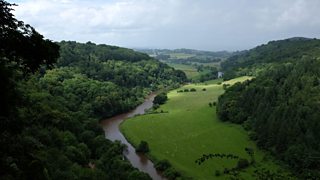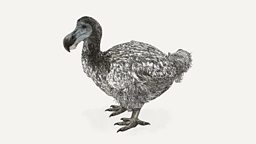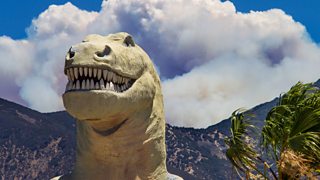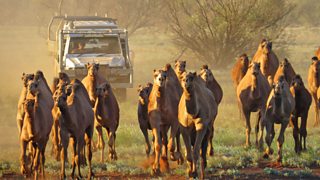Seven marvellous animals we鈥檒l never see again
In his new series, The Extinction Tapes, Rob Newman tells the stories of five once thriving animals now wiped from the planet. We may often think of extinction as a rare occurrence, wiping out the dinosaurs and such, but as Newman’s show demonstrates, extinction happens with alarming regularity.
Here are the five creatures featured in The Extinction Tapes, plus two others we’ll sadly never see again.
Alabama Pigtoe
This humble mussel lived in the Mobile river in Alabama until about 2006.
Named because it looked like a pig’s foot, it would filter the polluted water of the filthy river, but the levels of pollution became so high that the pigtoe could no longer cope.
-
![]()
The Extinction Tapes
Rob Newman tells stories of the species we've lost forever, and our role in their demise.
The eradication of this simple creature revealed darker truths about the water, which was being filled with dangerous chemicals from factories and causing fatal sickness in the mainly African-American community that lived by it.
Yangtze River Dolphin
Also declared extinct in 2006, the Chinese Yangtze river dolphin was a pale, putty-coloured mammal that looked rather less sleek and elegant than its sea-swimming cousins.
Its plain looks hid a highly evolved echo location system, far superior to other dolphins. It was so finely tuned it could even identify the position of individual fish.
Its extreme sensitivity became a hazard, however, as the river filled with fishing boats, container ships, trawlers and man-made pollution. The Yangtze river dolphin, confused by such high traffic, had no chance of survival.

Miss Waldron鈥檚 Red Colobus
Living on the border between Ghana and the Ivory Coast, Miss Waldron’s Red colobus was a mid-sized, red-maned monkey with no thumbs.
Many of the most remarkable extinct animals were variations on species we still know today, but a bit more bizarre.
A gentle thing used to living in large groups high up in tree canopies, it was forced to change its way of life as man began to cut down its forest habitat.
As patches of forest reduced in size, the Red colobus groups became too small, leading to less protection against predators and genetic weakness caused by in-breeding. It was declared extinct in 2019.
Irish Elk
Many of the most remarkable extinct animals were variations on species we still know today, but a bit more bizarre.
There’s the mammoth, for example, which is not unlike a huge elephant with a massive coat on.
The Irish Elk, or Irish Deer, looks very similar to still-living deer, aside from the fact it was over two metres tall with antlers that spanned up to 3.65m.
It died out around 7,700 years ago, possibly due to a combination of hunting and a changing climate.
What is the UK’s fastest disappearing species?

The species that could become extinct in the UK within twenty years.
Dodo
It’s an odd honour to be the most famous extinct bird, but for some reason the dodo is the one long-gone species, aside from dinosaurs, that everybody knows.
The daffy-looking flightless bird once lived on the island of Mauritius, without any natural predators.
When humans arrived on Mauritius, bringing with them other animals and their own appetite for meat, the dodo did not last long. The last ones waddled off their mortal coil in the late 1700s.

Stellar鈥檚 Sea Cow
If you encountered a Stellar’s sea cow you’d know about it. This relative of the manatee looks much like that gentle, blubberous water creature, except vastly bigger.
Steller’s sea cows could grow up to nine metres long. Its remarkable appearance and all that valuable fat made it a prime target for hunters.
It apparently tasted like beef marinated in almond oil.
It’s believed it was wiped out by a mix of hunting and changes in its feeding environment.
How sexy were dinosaurs?

Were some appendages actually there for sexual selection?
Quagga
The poor old quagga’s unusual beauty was the reason for its extinction.
This remarkable looking African animal had a front half that was striped like a zebra, but those stripes faded away on its back half, which was plain and brown like a horse.
It was hunted into extinction by poachers who prized its strange looks, with the last one dying in captivity in the 1880s.

More from Radio 4
-
![]()
The Extinction Tapes
Rob Newman tells stories of the species we've lost forever, and our role in their demise.
-
![]()
Will humans survive the century?
The experts investigating how to mitigate the giant risks we face.
-
![]()
How you can save the environment through gardening
Abandon the lawn mower, let nature take control and transform your life with plants.
-
![]()
Seven of the world's most infamous animal invaders
From mammals to molluscs, here are seven of the world鈥檚 most troublesome animal invaders.




